Abstract
The relationship between corrected skull width and the presence and size of an interfrontal bone is discussed with regard to the effect of certain mutant genes in the mouse known to affect the development of the neural tube. All genes reviewed which increase the incidence of the interfrontal bone and affect the neural tube also change the proportions of the adult skull.
Full text
PDF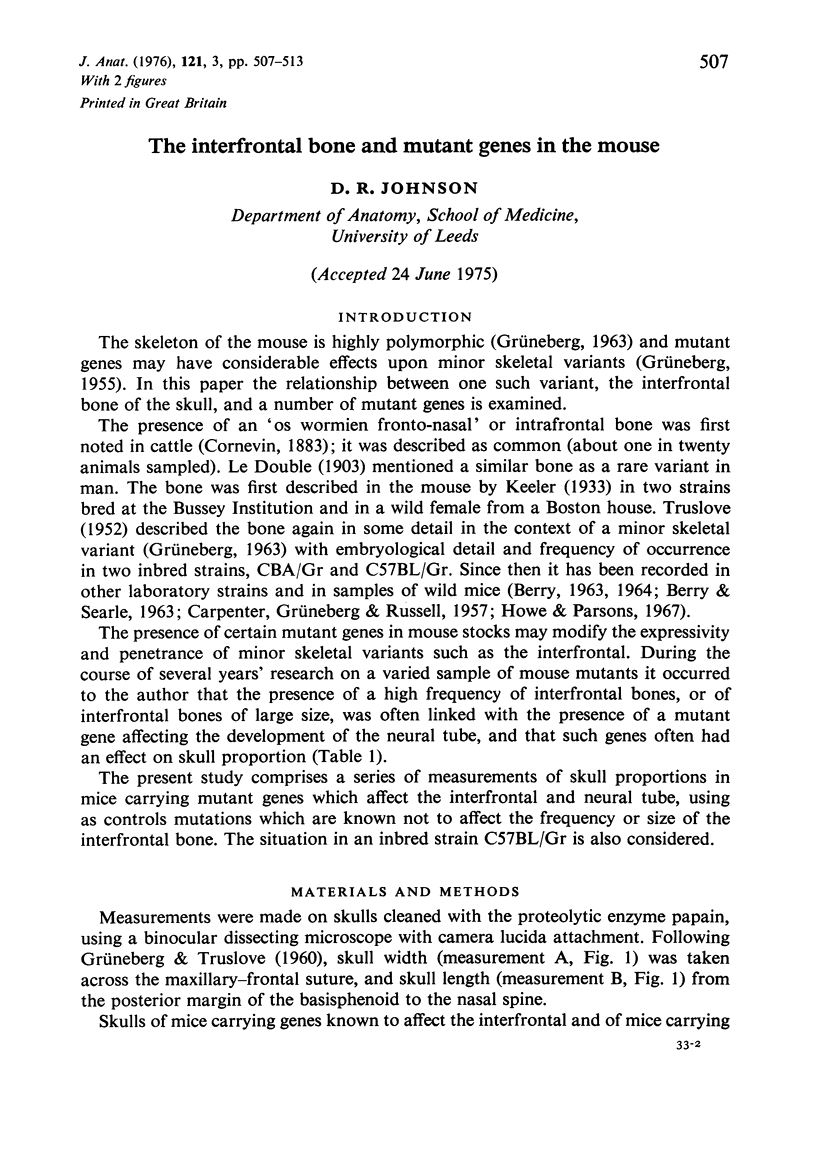
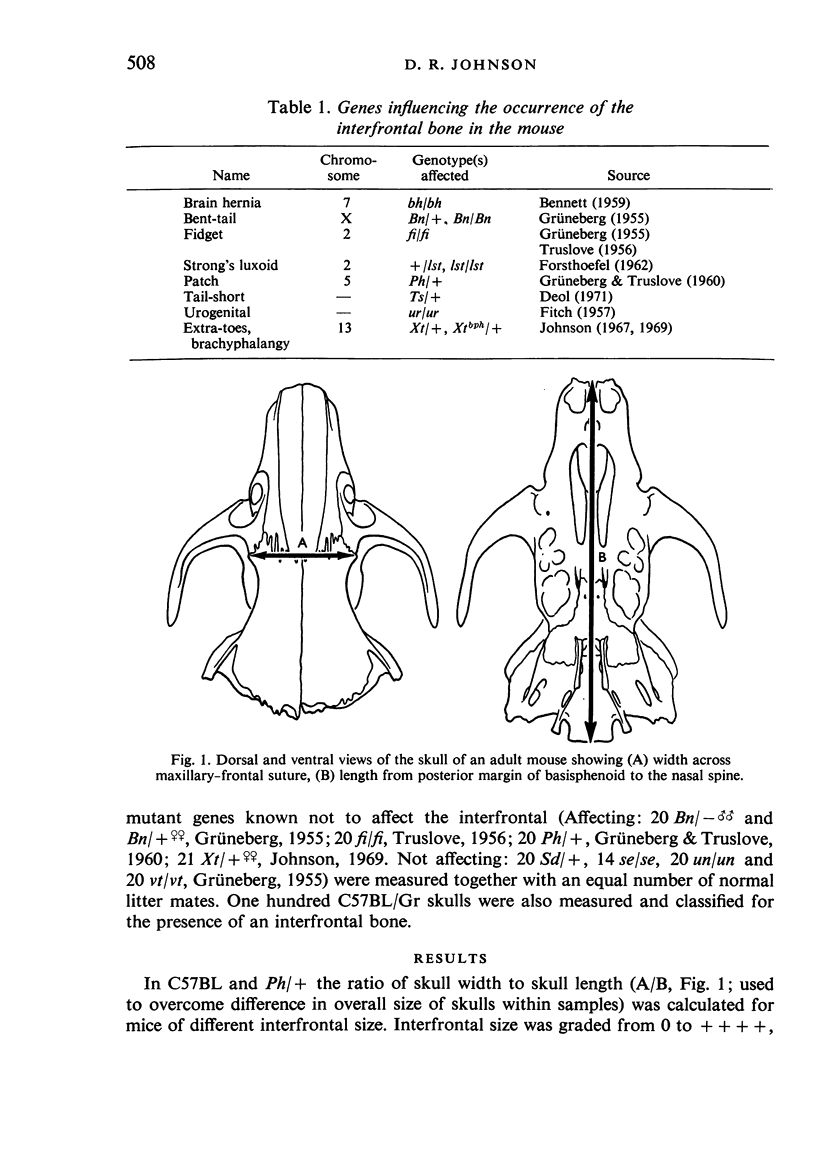
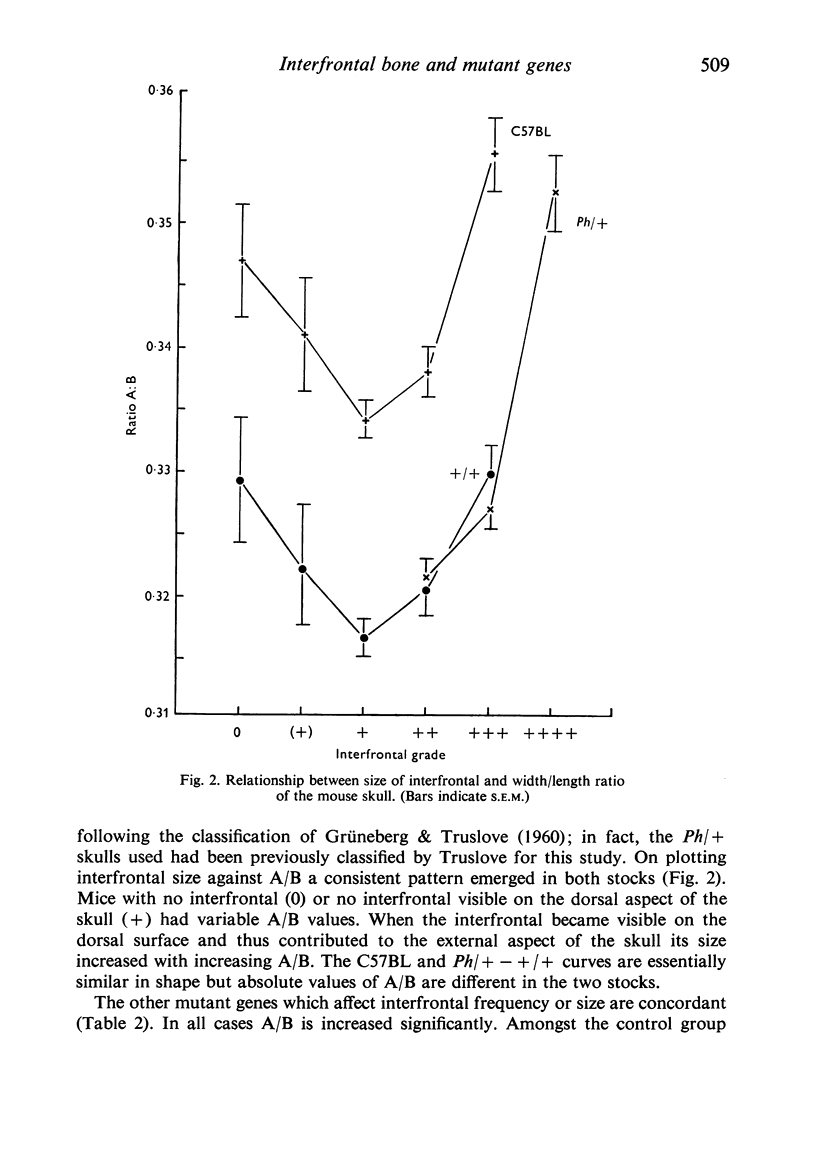
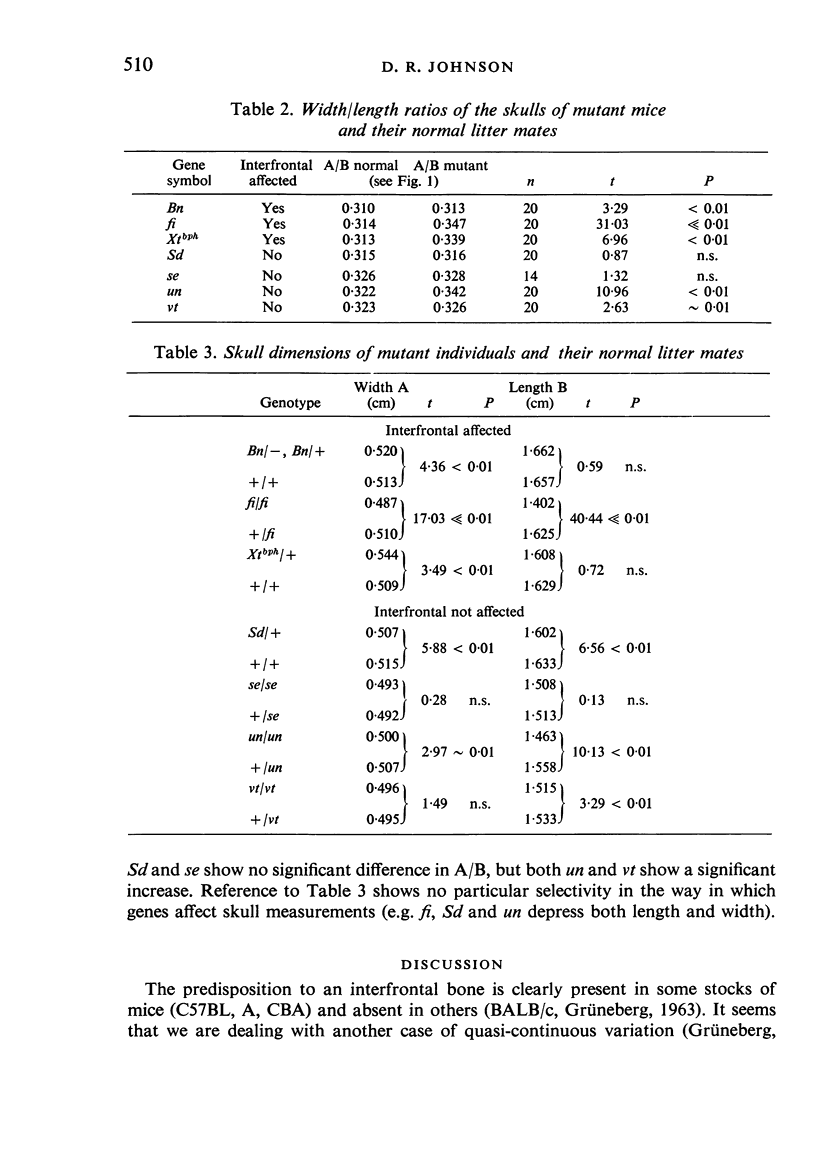
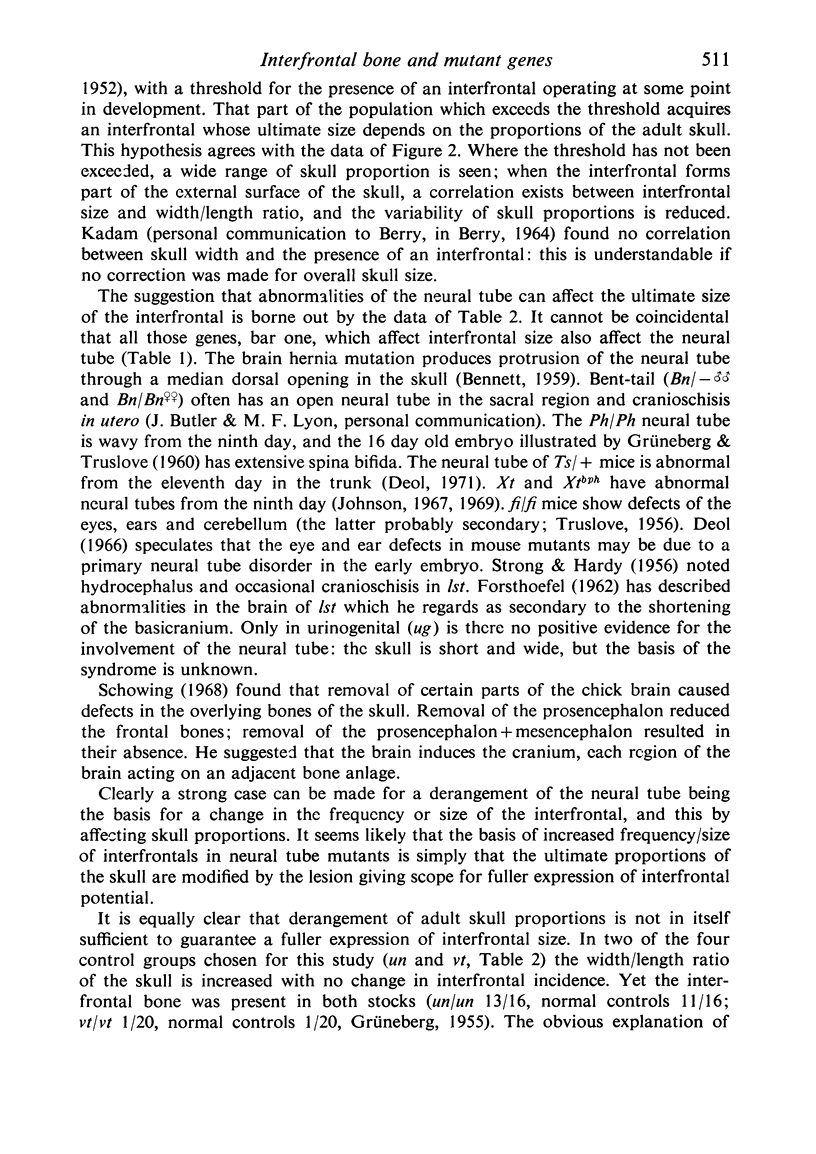
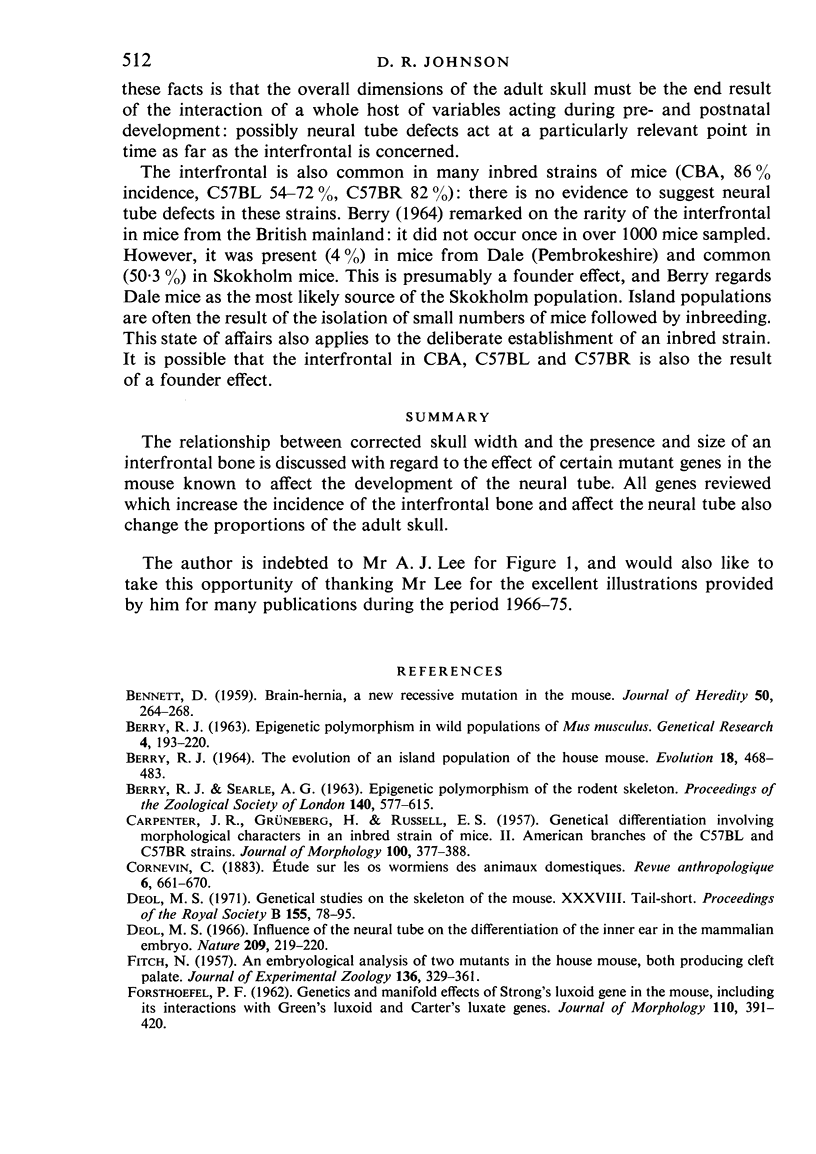
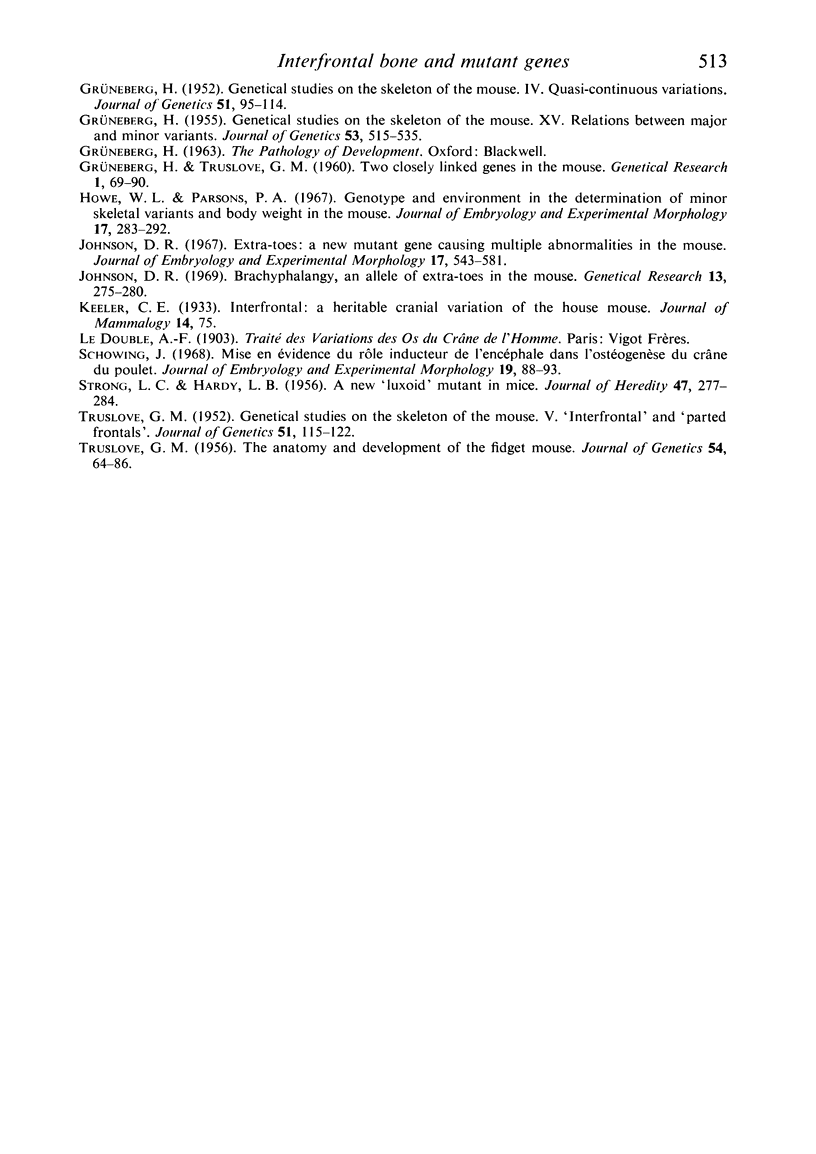
Selected References
These references are in PubMed. This may not be the complete list of references from this article.
- Deol M. S. Influence of the neural tube on the differentiation of the inner ear in the mammalian embryo. Nature. 1966 Jan 8;209(5019):219–220. doi: 10.1038/209219a0. [DOI] [PubMed] [Google Scholar]
- FITCH N. An embryological analysis of two mutants in the house mouse, both producing cleft palate. J Exp Zool. 1957 Nov;136(2):329–361. doi: 10.1002/jez.1401360208. [DOI] [PubMed] [Google Scholar]
- FORSTHOEFEL P. F. Genetics and manifold effects of Strong's luxoid gene in the mouse, including its interactions with Green's luxoid and Carter's luxate genes. J Morphol. 1962 May;110:391–420. doi: 10.1002/jmor.1051100306. [DOI] [PubMed] [Google Scholar]
- Johnson D. R. Brachyphalangy, an allele of extra-toes in the mouse. Genet Res. 1969 Jun;13(3):275–280. doi: 10.1017/s0016672300002962. [DOI] [PubMed] [Google Scholar]
- Johnson D. R. Extra-toes: anew mutant gene causing multiple abnormalities in the mouse. J Embryol Exp Morphol. 1967 Jun;17(3):543–581. [PubMed] [Google Scholar]


